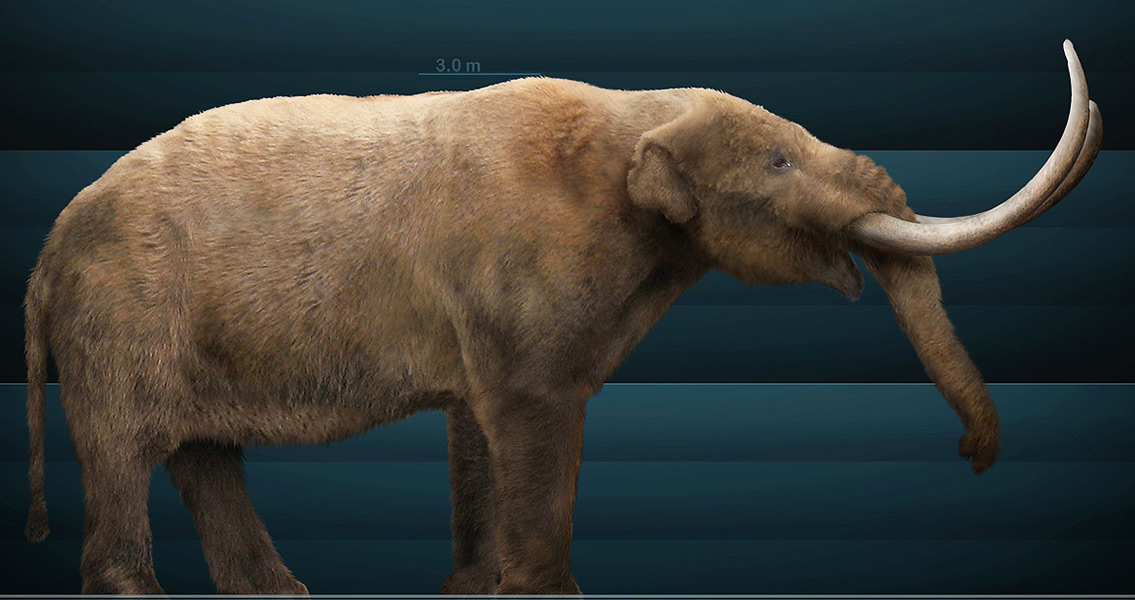<![CDATA[Squashes, gourds and pumpkins - the Cucurbita group - are a major part of our diet, yet they're unpalatably bitter in their wild form. How we started to cultivate these foods has long been a mystery, but a team of anthropologists have come up with a surprising explanation. They argue that had the megafauna of the Pleistocene, creatures such as mastodons, mammoths and giant sloths, not gone extinct, humans would never have adopted Cucurbita into their diets. "Our study proposes a link between the disappearance of megafaunal mammals from the landscape, the decline of wild Cucurbita populations, and, ultimately, the evolution of domesticated Cucurbita alongside human cultivators." Claims the abstract to the study, published this week in the Proceedings of the National Academy of Sciences. The Cucurbita genus contains a plethora of domesticated lineages, all of which originated in the New World thousands of years ago. Archaeological evidence has proven that the genus was broadly distributed in the past, but a dramatic decline means that many of the crops' progenitor species are now incredibly rare or even unknown in the wild. Lee Newsom, an associate professor at Pennsylvania State University and one of the authors of the study, has recovered many wild gourd and squash seeds from ancient mastodon dung, a fact which led the team to conclude that the massive creatures may have played a key role in the history of the plants. The researchers believe that although these giant mammals ate the species from the Cucurbita genus, humans and smaller animals initially did not due to the bitter taste. "Rather, they might have been useful for a variety of other purposes like the bottle gourd, as containers, tools, fishnet floats, etc. At some point, as a symbiotic relationship developed, palatability evolved, but the details of that process aren't known at the present." explained Logan Kistler, an author of the study, in a Penn State university press release. By analsying complete plastid genomes of 91 Cucurbita samples, including modern domesticated plants, modern wild plants and archaeological specimens, the team of scientists from Penn State were able to map the distribution of the Cucurbita genus. "This analysis demonstrates independent domestication in eastern North America, evidence of a previously unknown pathway to domestication in northeastern Mexico, and broad archaeological distributions of taxa currently unknown in the wild. Further, sequence similarity between distant wild populations suggests recent fragmentation. Collectively, these results point to wild-type declines coinciding with widespread domestication." explains the abstract to the study. The team concluded that without the mastodons and other megafauna to distribute their seeds wild Cucurbita plants started to grow over a smaller area, their distribution limited to where seeds dropped from the wild plants. At the same time, the disappearance of the megafauna also affected the landscape, changing from the diversity of the Pleistocene to the more uniform holocene. At this point, as the means of dispersal for the seeds started to diminish, the forms of the crops cultivated by humans started to totally replace the wild forms, a fact confirmed by the DNA analysis. Nowadays there is substantial variation between Cucurbita species, something which Kistler suggests could be the result of the crops being domesticated six times in six different places. The question remains however, at which point did humans discover the forms of the plant that had lost their toxicity, and start to use them for food? For more information: www.pnas.org Image courtesy of Wikimedia Commons user: Sergiodlarosa]]>
Giant Species Were Crucial to Pumpkin Domestication
